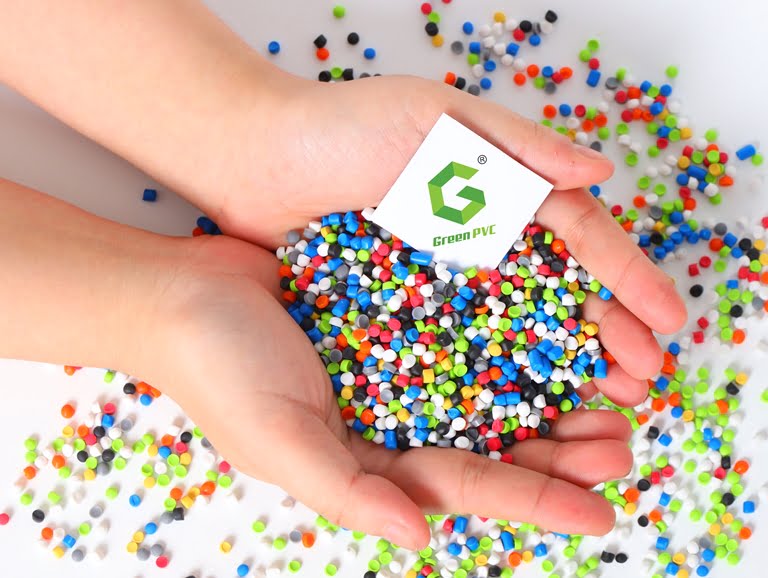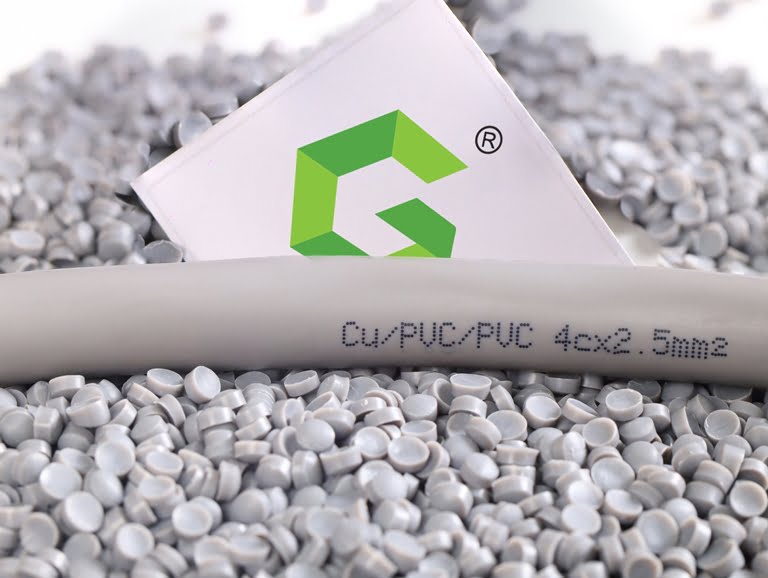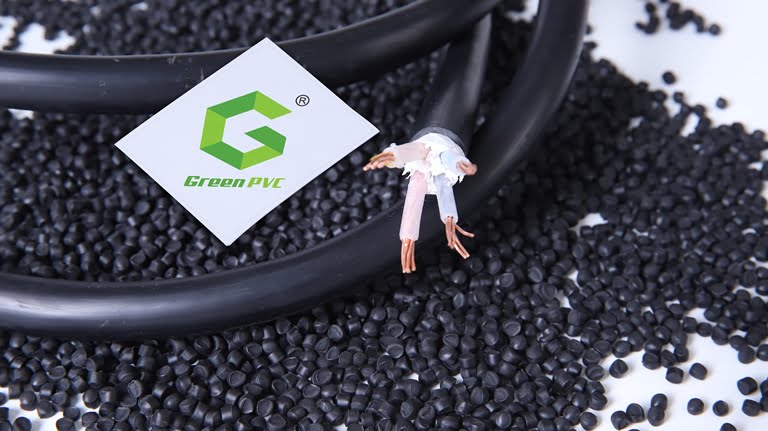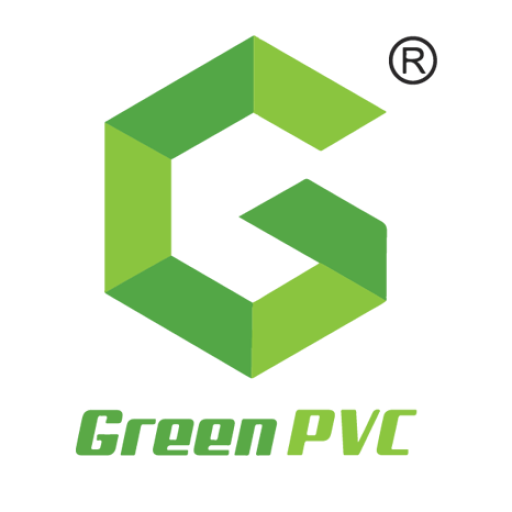PVC Compounding in detail: structure, Applications, recycling. Find all the information here about the fundamental principle of PVC compounding.
PVC, which is Polyvinyl Chloride, is a raw material used to create many products in everyday life, from common household items to unique industrial products. It is abbreviated as vinyl.

Structure of PVC compounds
As a thermoplastic, the composition of PVC consists of 57% chlorine (derived from industrial salts) and 43% carbon (mainly derived from oil/gas via ethylene). This chlorine gives PVC excellent fire resistance. PVC has high stiffness and mechanical properties. The mechanical properties of rigid PVC (uPVC) are excellent; elastic modulus can reach 1,500 – 3,000 MPa. Soft PVC (flexible PVC) elastic is 1,5 – 15 MPa. PVC has excellent insulating properties, making it ideal for wiring applications. Good impact strength and weatherproof properties make it suitable for construction products.

PVC compounds are durable, cheap, and easy to use. Before entering the product manufacturing process, PVC converts into mixtures by incorporating additives (but not necessarily all). They are heat stabilizers, UV stabilizers, plasticizers, processing aids, impact modifiers, fillers, flame retardants, biocides, blowing agents, optionally, and colorants. The selection of additives in finished PVC products is based on the cost-performance requirements of end-use specifications. Some PVC compound-making processes are extrusion, injection molding, blow molding, laminating, spreading, and coating.
Applications of PVC compounds
Because of its diverse nature, PVC has become a production material for many industries. It is combined with other substances to determine whether they are hard, plastic, or semi-rigid. And, of course, this will select the product manufactured using PVC.
Some applications: Producing shoes, Power cables, gas application, Pipe Fittings, Polyvinyl Flooring, Garden faucets, Plumbing parts, Medical devices, Automotive Parts, Waterproof devices, Toys, and Food packaging.

While using PVC compound for applications, the only thing to watch out for is overheating. PVC can withstand a certain amount of heat but not extreme heat and flames unless manufactured to be fire-resistant. When continuously exposed to high temperatures, PVC products may melt and release harmful chemicals.
Business customers need to define their product requirements when working with PVC suppliers. The PVC compound manufacturer ensures that the plastic filler compounds are flame retardant, minimizing risk during use.
See more: PVC COMPOUND from Green PVC Compound in Vietnam
Is PVC compound recyclable?
The world is moving towards sustainability, reducing carbon emissions, and minimizing environmental pollution. The typical act of global concern is plastic recycling.
Plastic has become part of the world, ubiquitous and recyclable. Manufacturers of plastic products and PVC compounds can rest assured that there are unique products that are 140 years old and can be recycled about 7 times. Depending on the type of product and the grade of the material, their recyclability is different.

Most importantly, as a manufacturing business, it is important to be aware of plastic product responsibilities, choose quality materials, and commit to recycling.
If you are looking for a potential and reputable PVC compound supplier, Green PVC JSC from Nhat Huy Group can help. Don’t hesitate to contact us today for more details.
Discover more about our products
Why Green PVC’s Flexible PVC Compounds Are the Choice for Industry Leaders
Differences between flexible and rigid PVC compounds
The Comprehensive Guide to Rigid PVC Compounds from Green PVC
Why Green PVC’s Flexible PVC Compounds Are the Choice for Industry Leaders
Crystal Clear Solutions with Transparent PVC Compounds from Green PVC
| Nhat Huy Group is a leading Vietnamese manufacturer and exporter of various products. Founded more than a decade ago, we have been doing business with customers from all over the world, covering five continents. Green PVC JSC is a PVC compound factory belonging to Nhat Huy Group. Since its inception, the Board of Directors has oriented the company toward industrial production. Our factory is equipped with modern equipment, machines, and advanced production lines from all over the world. |
